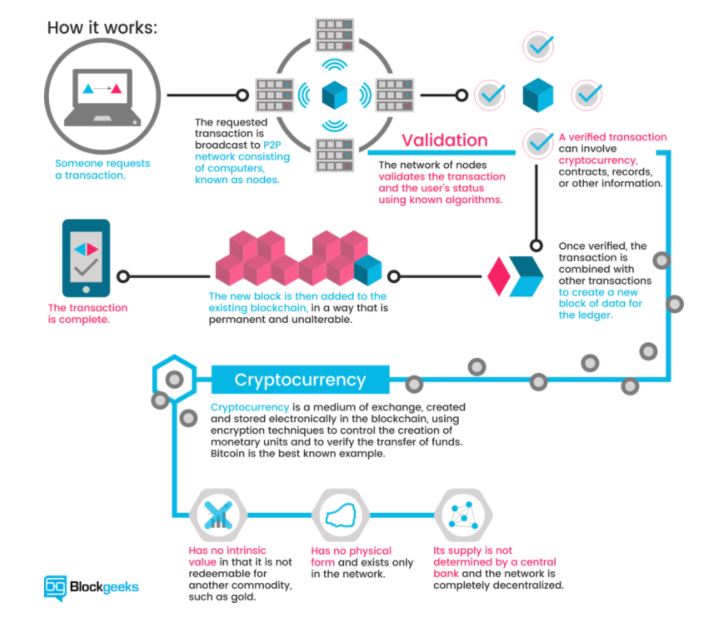Money, Power, and Control. That has been the true purpose of business since the creation of a corporation. Can cryptocurrency change that?
Before the internet, information flowed slowly from one place to another, either by verbal or written communications. Governments and businesses alike used the slow movement of information to their advantage through exaggerations and false reporting. Many of those false reports still affect us today, like the sugar industries scientific diversion to fats as the sole cause of America’s diabetic woes.
What I am trying to do is paint a picture for you, the reader, as to why cryptocurrency and its successors need to exist. I will try to break the subject down into digestible bites, but if you ever get lost in the weeds refer to the source list at the bottom of this article.
What is Cryptocurrency?
At the start of the internet in the 1990’s, people from all over the world tried to start a digital cash system. We aren’t talking about Venmo or Paypal, where the cash amount is based off of government issued currency in your bank account. I mean a completely decentralized non-government issued currency where the value was based off of what you valued the currency at.
However, none succeeded. Each attempt failed until Satoshi Nakamoto accidentally developed Bitcoin in late October of 2008. Bitcoin was/is “revolutionary in that it is completely decentralized, with no server or central authority.” – Satoshi Nakamoto 1/9/2009
Satoshi solved the main problem of double spending, where one user spends the same currency twice, by making every Bitcoin user a bookkeeper. Every single peer on the currency network needs absolute consensus about every transaction that has taken place. Once a transaction is announced and processed, it is added to an immutable Blockchain, otherwise known as the global ledger.
So where does the “Crypto” come in to play? Your personal bitcoin funds as well as the blockchain are protected by heavy cryptographic functions. In English, that means that your hard-earned cash is locked away by a lock with an almost infinite number of mathematical keyholes and only unlocked by a specific key in a specific hole.
To post a transaction to the blockchain, you need a bitcoin miner. Satoshi saw that one larger controlling group might try to post false transactions through thousands of fake peers and steal from fellow bitcoiners. To prevent such theft, he made sure that some kind of work had to be done in order to post to the blockchain. Miners have to individually or collectively solve the SHA 256 Hash algorithm, a cryptographic function developed by the NSA, to post to the blockchain.

To give you some awe-inspiring perspective about this algorithm, it takes a group of letters, words, or sentences of virtually any length and digests them down to a select number of symbols and characters called a hash. Adding one period at the end of two identical sentences can change the hash output by up to 50%!
Now that your understanding is pretty much equal to mine, lets jump into the meat and potatoes of this article. Ethereum.
The Evolution of Bitcoin
If we think of blockchain technology as the internet, then bitcoin and cryptocurrency is like email; it is one important use-case for the internet, but by no means is it the only one.
Ethereum’s founding purpose is to give developers a platform to build decentralized applications using blockchain technology. It still functions as a distributed public blockchain network similar to bitcoin, however, it is meant to run decentralized applications called smart contracts.
Before Ethereum, if you wanted to build your own unauthorized and decentralized application you would have had to create your own blockchain from scratch; not to mention build the actual application on top of it.
Now Ethereum offers a blockchain platform to build applications and programs on top of, allowing developers to create decentralized programs faster.
The Ethereum platform runs on a very similar currency as Bitcoin. The cryptocurrency, called ether, is used to buy and sell decentralized services on the Ethereum network. To give some perspective, the current market cap for Ethereum is approximately $8 billion USD.
Where Ethereum Intersects with You
To say that our current political climate is unstable is an understatement. Corporations have more sway over the government than the populace and the popular vote seems to matter less each year.
Imagine a healthcare, insurance, or banking system that was truly controlled and funded by its constituents. I’m not saying that this would solve all our problems, but it would help citizens take back industries where founding regulations change from president to president.
Ethereum has this capability. Where Bitcoin is limited to currency, Ethereum is not. Corporate giants like Microsoft, JP Morgan, and Intel are starting to take notice of the possibilities of Ethereum thanks to the Enterprise Ethereum Alliance.
Next Steps
I am going to dig deep into how to get involved in Ethereum so that I can bring it to the F24 audience. From blockchain development on the Ethereum platform to trading Ether on a Cryptocurrency exchange, I want to give you the full-circle view of Ethereum and my prediction for its future. Keep an eye out for part two.
Source List:
https://blockgeeks.com/guides/what-is-cryptocurrency/
https://blockgeeks.com/guides/what-is-ethereum/
https://en.wikipedia.org/wiki/SHA-2
https://en.wikipedia.org/wiki/Cryptographic_hash_function
https://poloniex.com/exchange#btc_eth
http://www.cnbc.com/2017/04/26/bitcoin-price-sec-winklevoss-etf-review.html
https://www.youtube.com/watch?v=GmOzih6I1zs&spfreload=1


